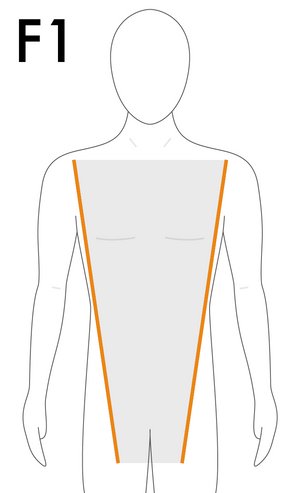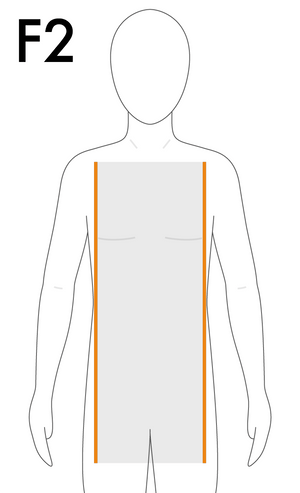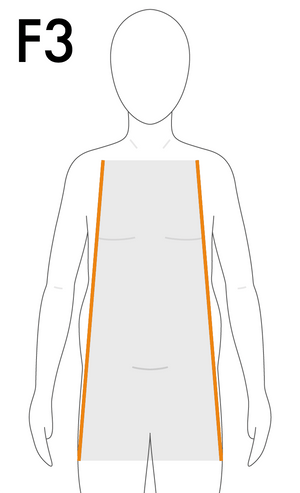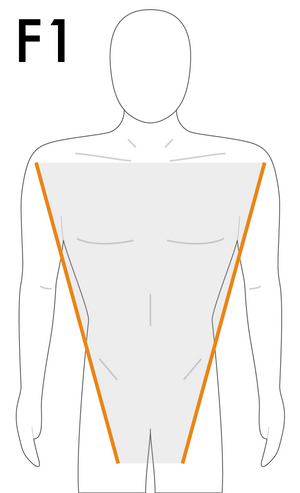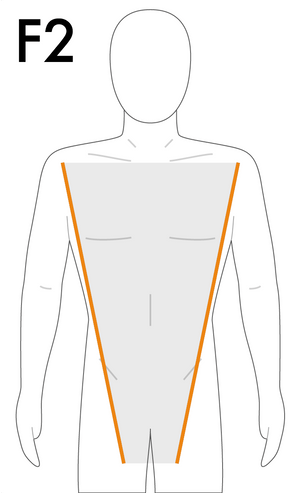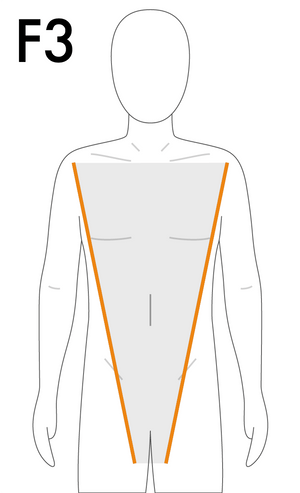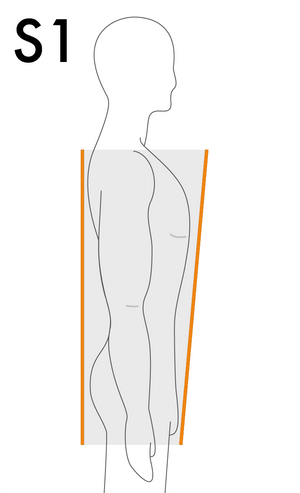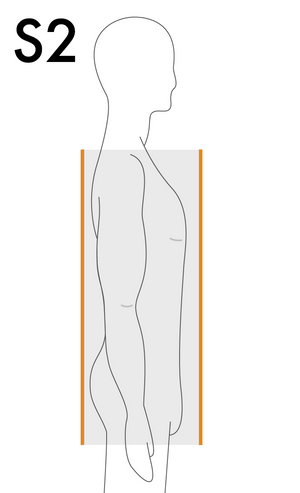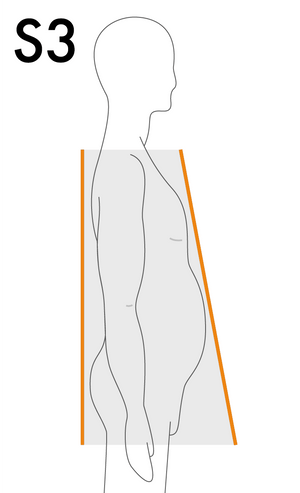Who’s Your Avatar?: Otero Menswear Introduces Perfitly
Announcing: A new partnership between cutting-edge designer Otero Menswear and a new fashion technology startup Perfitly. Otero has always been committed to rethinking fit. Our proprietary 3D-Proportional Sizing System (which ensures a perfect off-the-rack fit for men 5’4”-5’9”), has now found it’s logical extension with Perfitly and their patented virtual dressing room. Are you curious about cutting-edge fashion technology? Or do you just want to see exactly how your shirt will fit before you buy online? Keep reading…
Tech startups always begin when someone says: “Hey, we could do better than that.” And Perfitly is no exception. Perfitly is the new gold standard in digital shipping as their virtual dressing room takes the guess work out of online shopping.

Founder Dave Sharma got the idea when his daughter-in-law signed for a dozen Amazon boxes at once. He asked her what she was ordering, and she said that she was trying on different shoe styles and sizes: “But don’t worry. I’m returning most of them.” For her, the system is convenient and cost-effective, but Dave wondered about the wasted revenue. With free two-way shipping and easy returns, online clothing businesses that have to absorb even 20% product returns are losing billions in stocking, damage, and shipping costs. And, of course, there’s a corresponding impact on the environment from the additional shipping and wasted packing materials.
But how can customers know whether a product is really going to look good while they’re shopping in a virtual store? Every customer would need an accurate virtual dressing room. And that’s where Perfitly comes in.
Like most simple ideas, the trick would be in the execution. Dave brought together a team of experts that had collaborated on tech startups before, and they agreed that a functional virtual dressing room would require four elements:
- An accurate avatar of the customer’s body to serve as a mannequin
- An archive of clothing that would accurately recreate each garment’s design, fabric texture, and density
- Technology that could seamlessly layer the virtual clothing over the avatar, so that it would drape and stretch realistically
- An option that would let customers layer different sizes on the avatar, to compare different fits and looks
Easy, right?
Step 1: An Avatar for All Seasons
The avatar was the first challenge, and, in many ways, the most difficult, because there are layers to the problem: how do you instantly gather data from thousands of bodies, safely store the data without compromising privacy, and then craft an avatar that is both accurate and respectful?
The data gathering was the obvious starting point. Initially, the Perfitly team toyed with the idea of building thousands of scanning booths that could create a topographical map of each customer’s body. These measuring booths would be located in retail stores across the country, so that people could scan themselves in-person once, and then keep their data on file for virtual shopping. But the idea simply wasn’t scalable—the expense of buying, placing, and servicing the booths was prohibitive, and it wouldn’t realistically offer shoppers an effortless alternative to the current buy/return system of online shopping.
The team’s second idea was to use data collected from each customer’s phone. It would be scalable, but at the time (four years ago), the technology infrastructure just wasn’t that great—cameras only faced in one direction, the resolution was relatively poor, and customers would have had to get a friend to help them take a full-body picture or video that could be used to capture the body’s dimensions. And how would the team be able to accurately craft a 3D avatar from a 2D image or series of images? A few other companies were attempting to solve this same problem, but none of them cracked it, and so the Perfitly team decided to go back to the R&D board to create something entirely new. And by new, we mean math.
After gathering data on tens of thousands of bodies and using CAD technology to create algorithms capable of accounting for hundreds of common body shapes and sizes, the Perfitly team narrowed down their body design to just five crucial measurements: height, chest (for men)/bra size (for women), waist, hips, and inseam.

With those numbers, the Perfitly computations can create a 3D avatar with 95-97% accuracy for any adult body that falls in the 4’9” to 6’6” range. Yay, math!
But accuracy is only one part of the equation—people want to know that such incredibly personal data will be safe and not floating around for any hacker to steal. So, the Perfitly team made the decision to keep the avatars generic—today’s avatar has no face, and the “skin” of the avatar is silver. There’s also no option that would allow anyone to see a body avatar “naked;” it always comes dressed in the chosen garment (shirt, dress, pants, etc.) and a neutral cover-up. So, if you’re trying on a shirt, your avatar would always be wearing neutral black pants, or vice-versa. And, for security, there are no images of the avatar stored anywhere. Instead, each customer’s body data is represented in the system by a 247,000-point data cloud. When the customer wants to use the avatar, the Perfitly system pulls those points from an encrypted database in real time, and then creates and dresses the avatar in 1-2 seconds. When the customer is finished, the data is deconstructed back into the multi-point cloud, so that even if a hacker were to steal the data, they would have no way of interpreting it into accurate avatars, or figuring out which avatar cloud was assigned to which customer. There’s simply nothing for them to see or distribute, so the system is highly, highly secure. Even Perfitly technicians can’t see the avatars—they’re only accessible to the individual customer.
Step one: accuracy and security. Check.
Step Two: The Pixel, the Stitch, and the Wardrobe
The challenge of creating a virtual wardrobe also comes in two parts: the first of which is to account for hundreds of fabrics that all have unique texture, thickness, weight, and stretch (heavy-weight wool does not hang in the same way as whisper-thin silk). Perfitly had to innovate a smart algorithm that would allow fabric and material properties to be infused into every smart garment—the system knows how each fabric moves, behaves, and drapes.
The second challenge is that fashion companies constantly change their clothing lineup. So, the Perfitly team needed to apply the database of fabrics to the actual designs created by their fashion partners to rapidly create their unique database of specific clothing designs (representing every individual size and color) on a rolling basis to account for new seasonal designs. Today, there is an entire Perfitly team dedicated to collecting real technical designs (the clothing blueprints sent to actual clothing manufacturers) and virtually stitching together every garment released by each Perfitly brand partner.
Step Three: The Avatar and the Outfit
Step three required the delicate technical challenge of combining the two technologies: the static topography of the body and the dynamic drape of the fabric. The system has to account for all of those properties, accurately gauge the optimal size, and use smart algorithms to place the virtual garment on the avatar.
The trick isn’t just in the sizing, though, it’s in the interaction between the fabric and the human body—the system has to account for skin friction, surface tension, gravity—all of these real-world attributes have to be applied to the virtual garment before you can realistically see how your cotton shirt or silk jacket will behave on your avatar’s body, and Perfitly tech allows you to see that difference.
The result is a full, 3D simulation that’s totally new because isn’t just a picture stretched on a body—it is the exact garment replicated online, with the fabric draped on the body in 3D.

And now the technology is available to scale—hundreds of thousands of customers can try on garments at the same time, in the same second. Each avatar can be rotated, and you can zoom in and out to see the fabric details or the effect of the outfit as a whole—how low is the hemline? Does the garment fit at the waist and the shoulders? You can see front, back, and side views before you buy.
Today, any customer can go into any affiliated store online, and then click a button showing your avatar wearing any garment in the store in the size that best fits your body. Want it a little tighter or looser? That’s the next challenge…
Step 4: Size Matters
Everyone has a signature style, and some garments look better when they’re completely fitted or a little loose. Although Perfitly technology will choose your optimal size automatically, you can also choose to size up and size down. Combined with the 360° view, Perfitly takes all of the guesswork out of sizing.


You can try dozens of garments, in multiple sizes, in minutes—no stress, no waiting, no hassle. The virtual fitting room is seamlessly integrated into the shopping flow, where the shopper can just click “add to cart” from within the fitting room, and then either try on another garment or proceed to check out.
But that’s not all!
COMING SOON…
Photo Assist: While the five measurements can be used to create accurate avatars, the Perfitly designers want an even simpler solution, and they’ve found it. Soon, Perfitly users will be able to create an avatar on any smartphones. You’ll prop your phone against the wall, then a series of audio instructions will tell you how to stand for a portrait and profile, and the phone will automatically snap the photos once you’re in the correct position. Three minutes. No tape measure. This tech will be released before Christmas, as soon as it passes App Store certifications.
Custom Mannequin: Part of choosing a perfect garment involves matching the color of the fabric to your skintone, and our future technology will allow shoppers to apply their choice of skintone to the mannequin, and eventually to apply a 3D image of their own face. For security purposes, the image of your face will only be stored in your personal device, not in the Perfitly cloud. When you want to use the avatar, the Perfitly data will stream the garment specifications, and combine it with the image data that’s already stored on your phone. But whether you want the silver mannequin, the skintone match, or your face layered onto the avatar—it will all be up to you. All of the specs will be in the user’s control.
Whole Outfits: Right now, the system is only designed to handle one garment at a time, but the system will soon be capable of assembling ensembles so that you can see how individual garments will pair with other garments or accessories. Right now, the system is only designed to handle one garment at a time, but the system will soon be capable of assembling ensembles so that you can see how individual garments will pair with other garments or accessories.

About Otero Menswear
Founded in 2018 in Boulder, CO, USA by Steve Villanueva and Brett Lawrence, Otero Menswear is a men’s fashion lifestyle apparel brand. Otero Menswear seeks to make a positive difference in the world by offering apparel that fits the height, size and body type of the man who is 5’4” – 5’9”. Otero’s style is fashion-forward and professional. Each piece is designed using texture, cut, styling and findings that empower the wearer’s specific body type by visibly leaning and lengthening his profile. Otero Menswear: redefining the measure of a man.


